Reverse Cowgirl: skills and tools
Kunst im Tunnel, Düsseldorf, 2022
The Installation and Performance were part of the group show: off the beaten rack
Lisa Biedlingmaier, Paloma Proudfoot, Isa Schieche, Camilla Steinum und Theresa Weber
curated by Nantje Wilke

Turning Point - text by Lisa Alice Klosterkötter
They say I spin, sometimes on my palms, sometimes on my toes, like an acrobat –
because they can’t see. I am a mermaid or a snake and stand erect on my tail. I am a
bird, an angel, and dance lightly on the hardened tips of my wings. - Claude Cahun
One of the two ratchet trees is spun. A shrill creaking noise echoes through the
room.
In the short story collection Héroïnes (1925), Claude Cahun draws on
representations of Western culture as a critical re-reading of mythical identities and
stereotypical images of femininity. In the portraits of popular female key figures from
the Old and New Testament, Greek mythology, central European literary history, fairy
tales, and legends, the non-binary writer and artist modifies the theme of the heroine
by reinterpreting well-known symbols of femininity and opening up a perspective on
gender-fluid, homosexual, and bisexual identities that was scandalous at the time,
thus suggesting a critical perspective for her/his political and artistic environment.
The texts with titles like “Eve la trop crédule” (The overly gullible Eve), “Dalila, femme
entre les femmes” (Dalila, woman among women), and “La Sadique Judith” (The
sadistic Judith) allow the heroines to describe their own view of the well-known
stories.
Isa takes the double-headed snake, places it on the floor in front of the audience,
removes one of the heads, and turns on the vibration.
Original sin is a depicted in Cahun’s short story “Eve la trop crédule” as a side effect
of overly convincing product marketing. Eve is drawn to a fruit that promises to impart
knowledge to its consumers and emancipate them from their status as middle-class
housewives (even if that would mean being guilty of hubris, since creativity was
passed from God to Adam so that he could radiate his superiority to the world.) Eve
and the snake find out that tasting the fruit will not harm Eve’s life as God had
previously prophesied to her. His ban turns out to be absolute bigotry. After this
discovery, Eve (unlike Adam and God) is willing to share with others the knowledge
and understanding that was not bestowed on her from above, but that she acquired
at the risk of her own life.
She climbs the rope up the wall and picks an apple from the branch sticking out of
the wall. With an apple in her hand, she goes to the kneeling switchblades and
unfolds a head that represents the blade of the knife. Isa cuts the apple into pieces.
As part of the performative installation Reverse Cowgirl: skills and tools, the artist Isa
Schieche embarks on a pleasurable game between supposedly female and male
movements, flirting and dance, toughness and fragility, demonstration and activation
of the instruments, toys, and objects and their possible uses. In an ambivalent
tension between wanting and needing, passivity and activity, power and
powerlessness, the works address the difficulty of being able to move freely in
spaces. As in Cahun’s Héroïnes, the question arises as to how bodies, movement,
and actions take up space: what remains of them, is reported, observed, and passed
on? If I vibrate with vibrations other than yours, must you conclude that my flesh is
insensitive? - Claude Cahun
She takes the handles of the spinning top in her hands and turns herself and the
object to the music in a circle. The beat of the electronic music, produced by Antonia
XM, incorporates elements such as lasso throws and horse whinnies, and
approaches a syncopated climax.
Elements such as a lasso, double saddle, kissing flute (a carved wooden head that is
kissed in order to play it through the mouth as a flute) and knives become symbols of
a self-empowering practice. The spinning top is spun by hand, originally with a whip
or string. The idea of a woman in the hoop skirt, who is spun by hand or even with a
whip, is difficult to reconcile with isa Schieche’s works. Her large-scale, heavy
wooden object is a kind of stick figure that lends itself to spinning together thanks to
the shape of its body. But the result is an interplay of spinning and being spun, and
thus a shared acceleration and ecstasy.
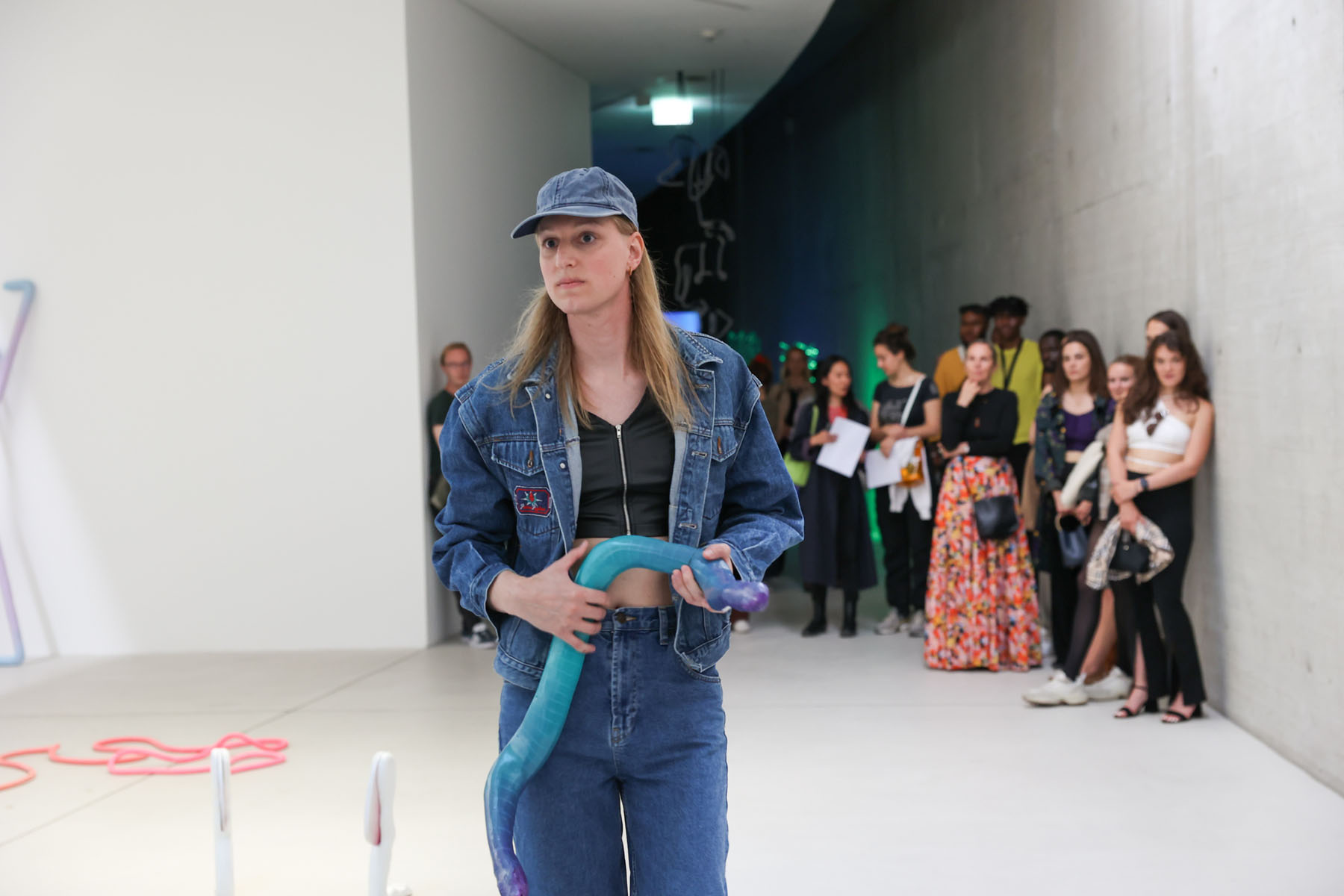
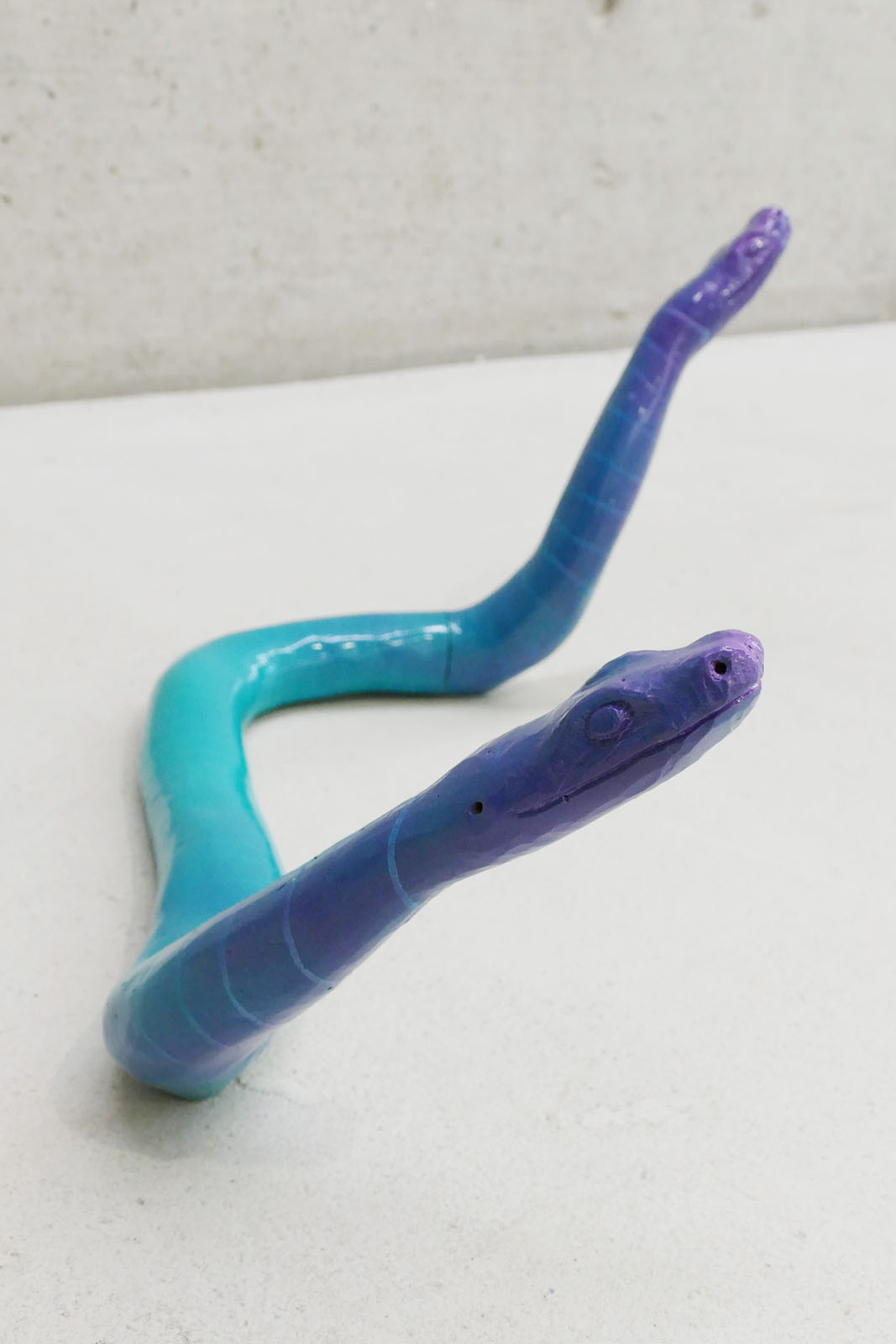
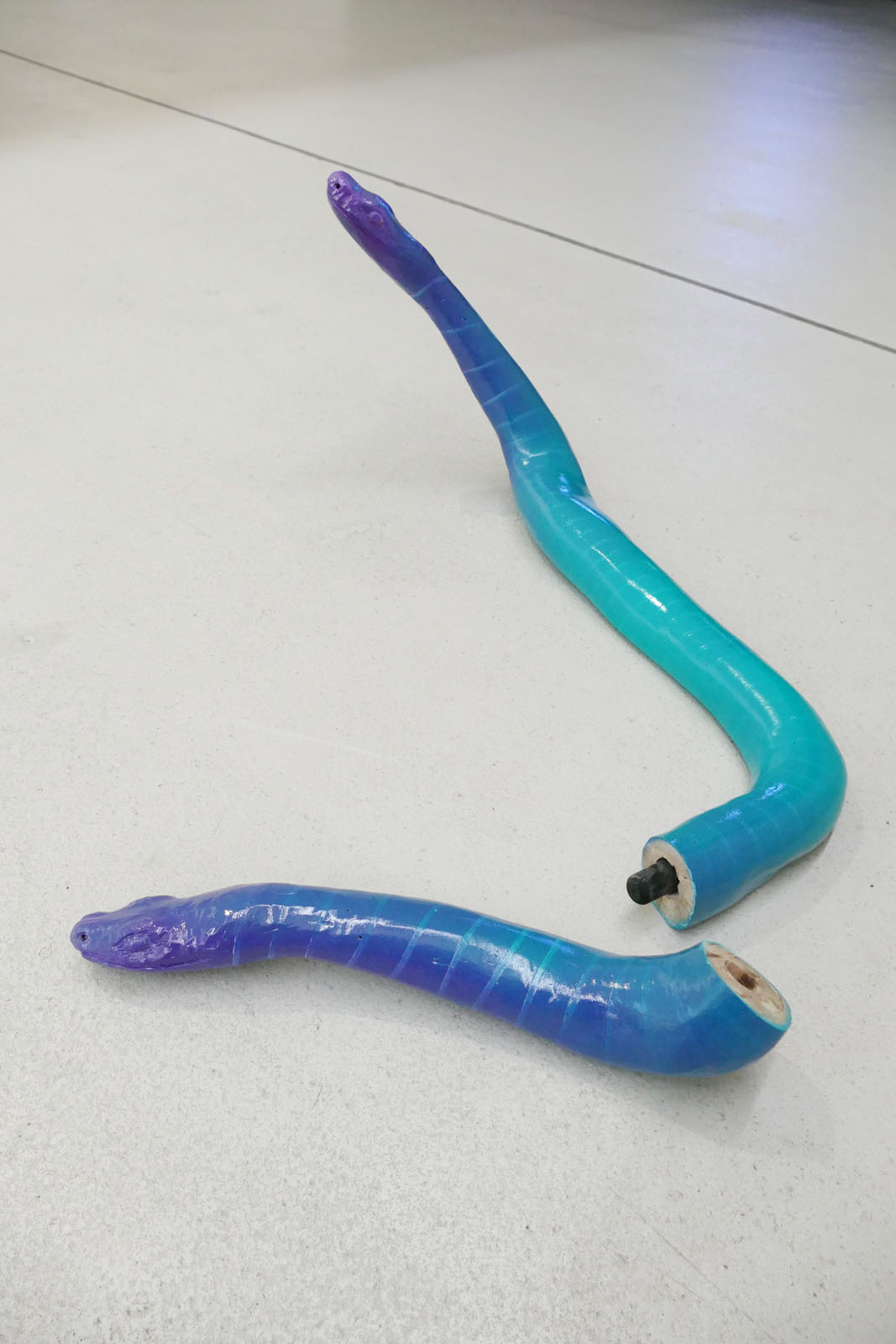
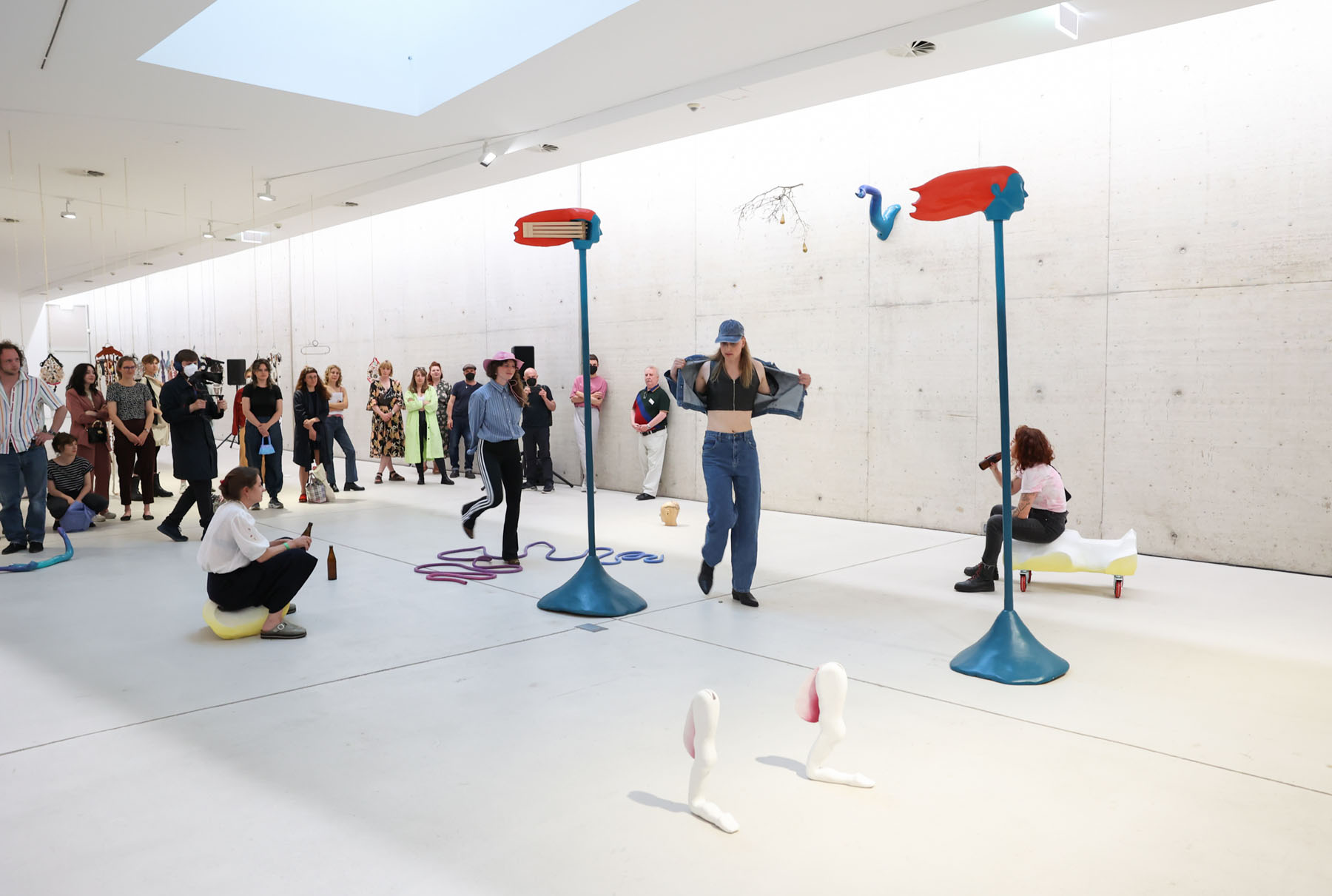
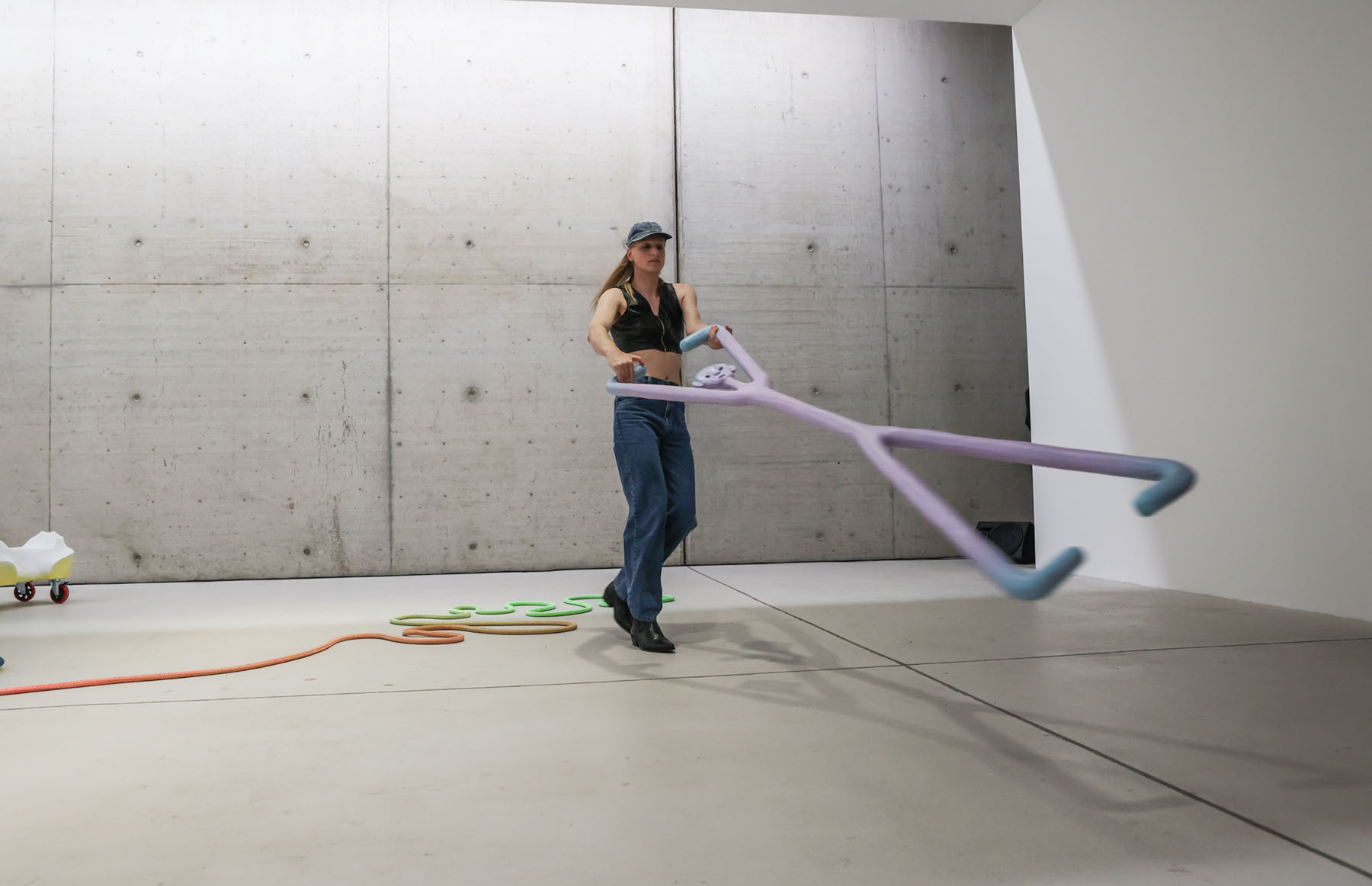
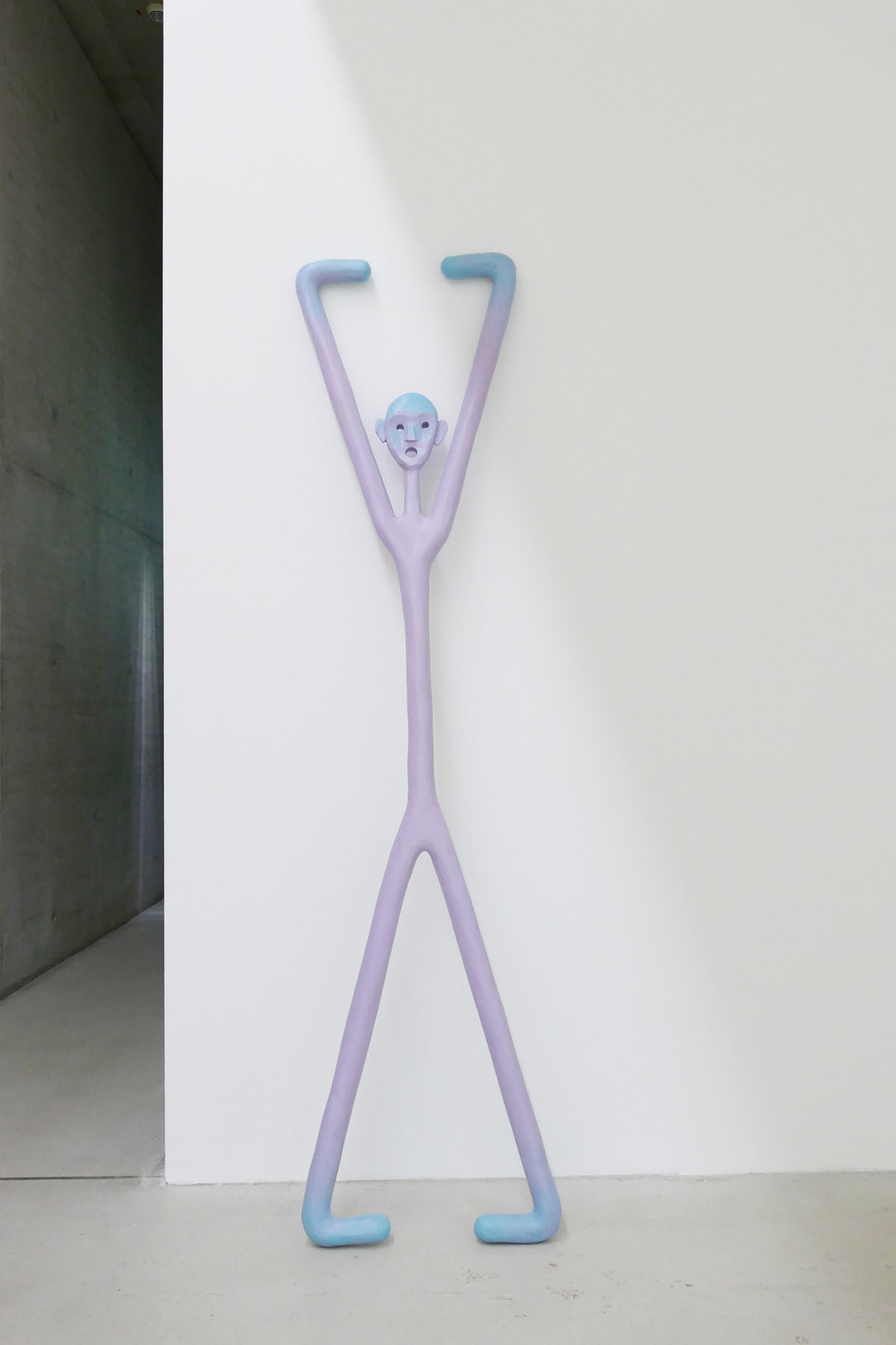

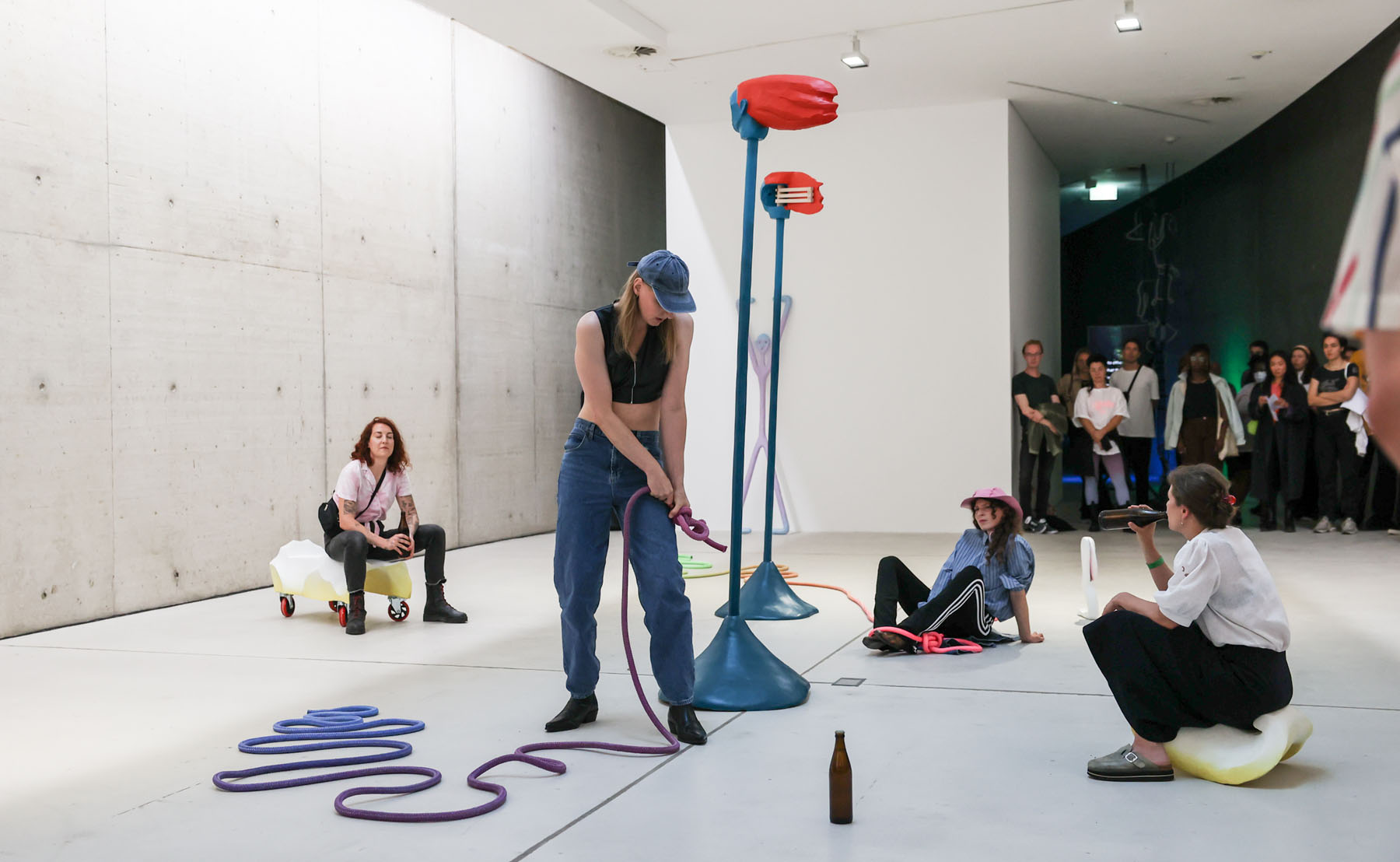


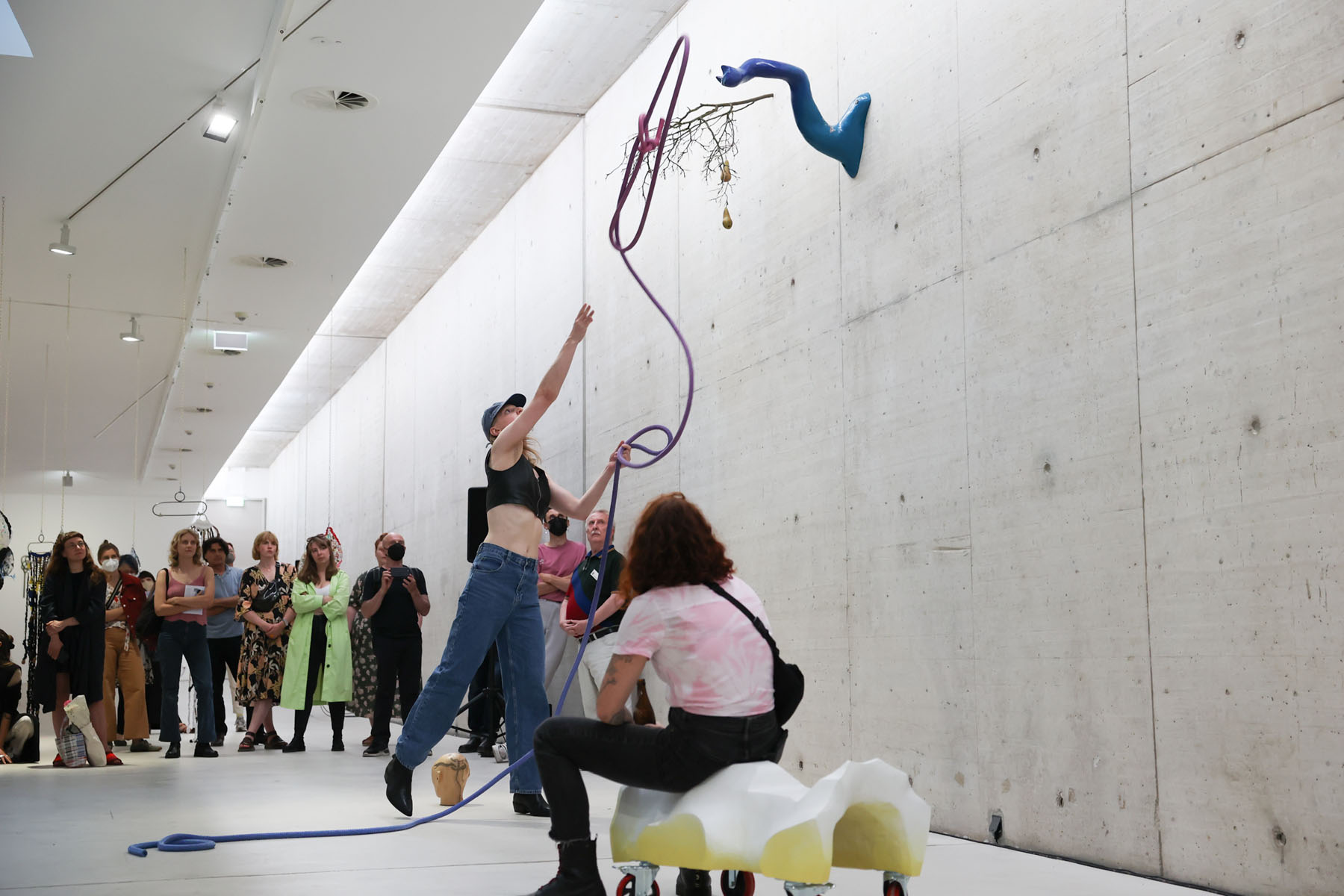


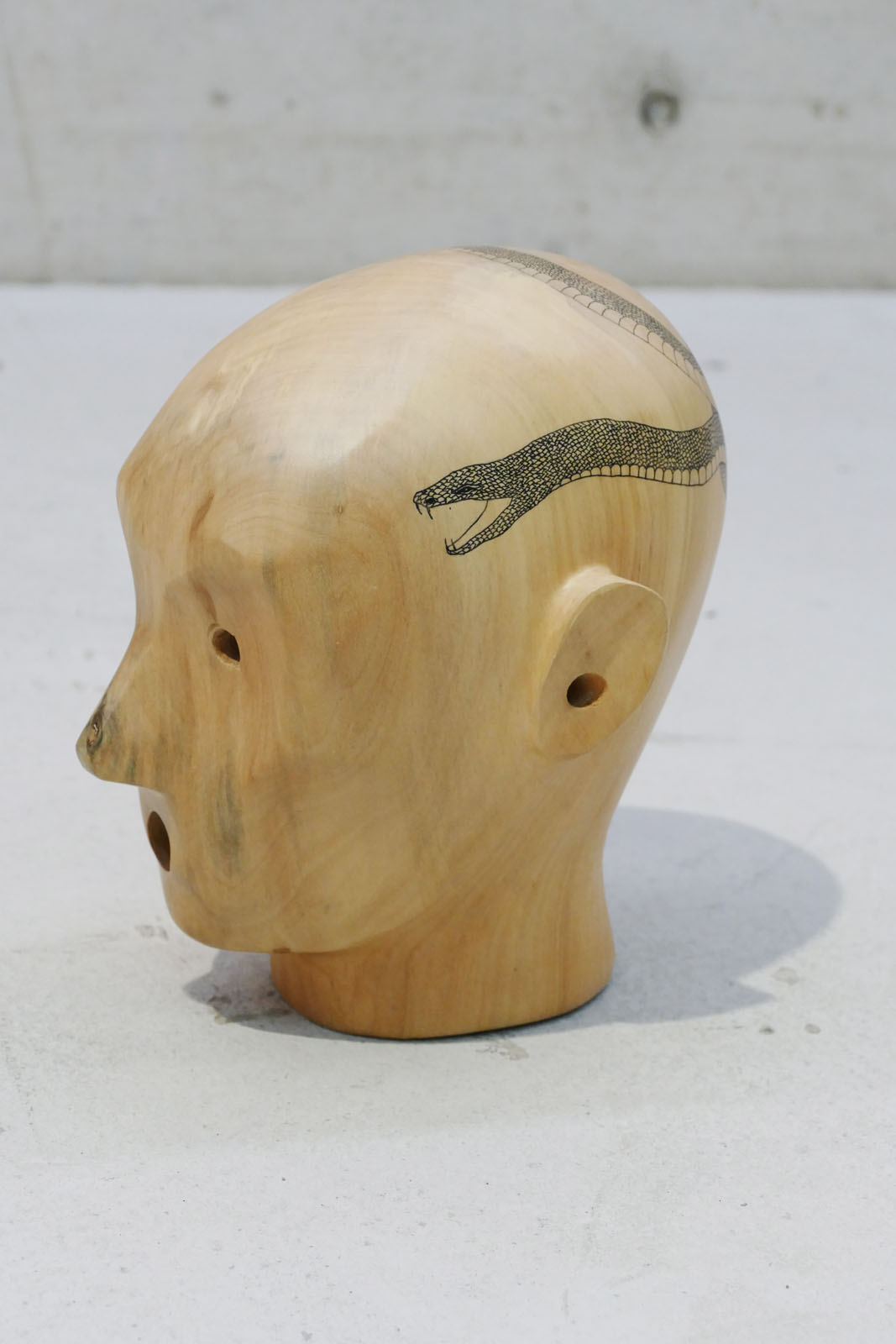
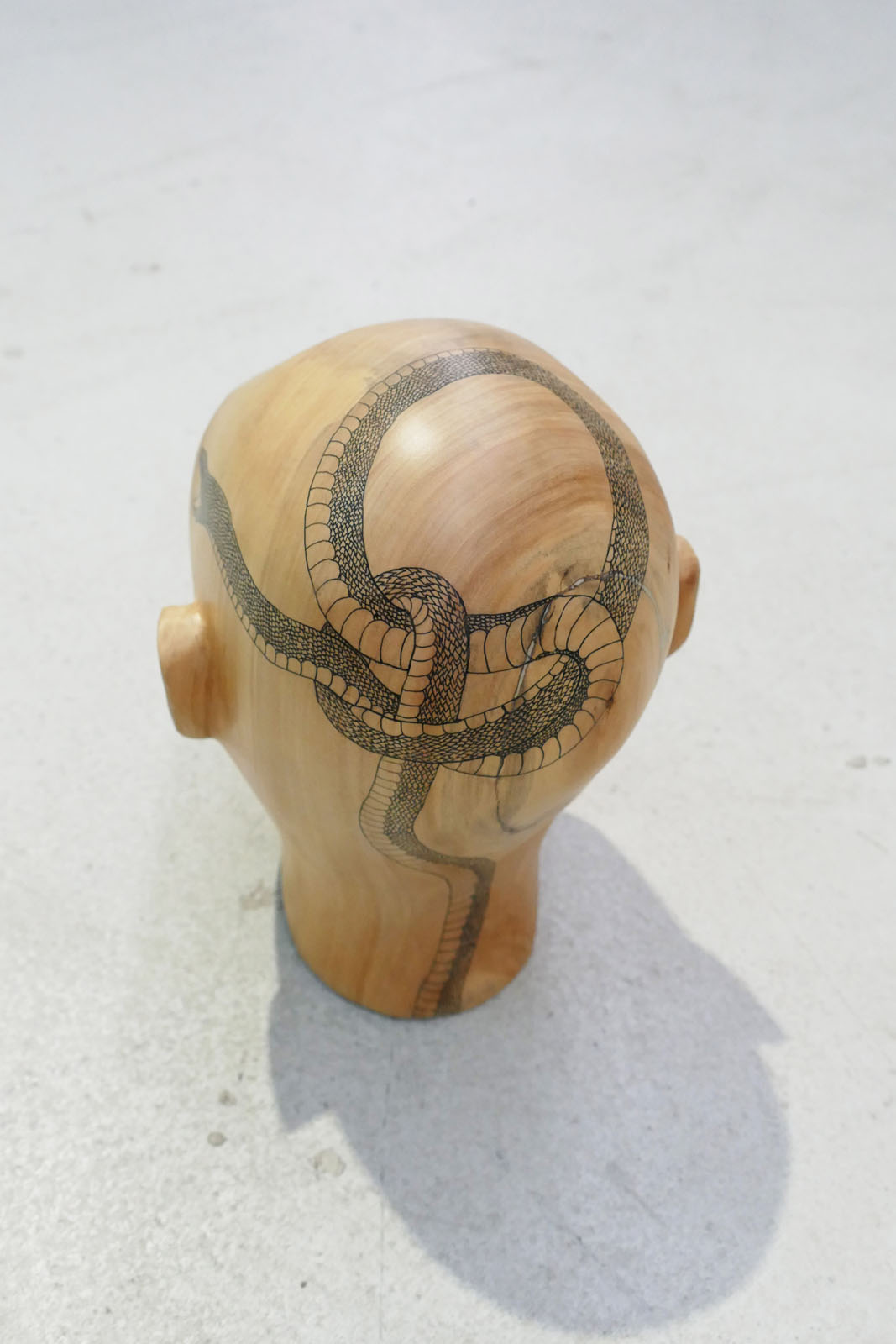
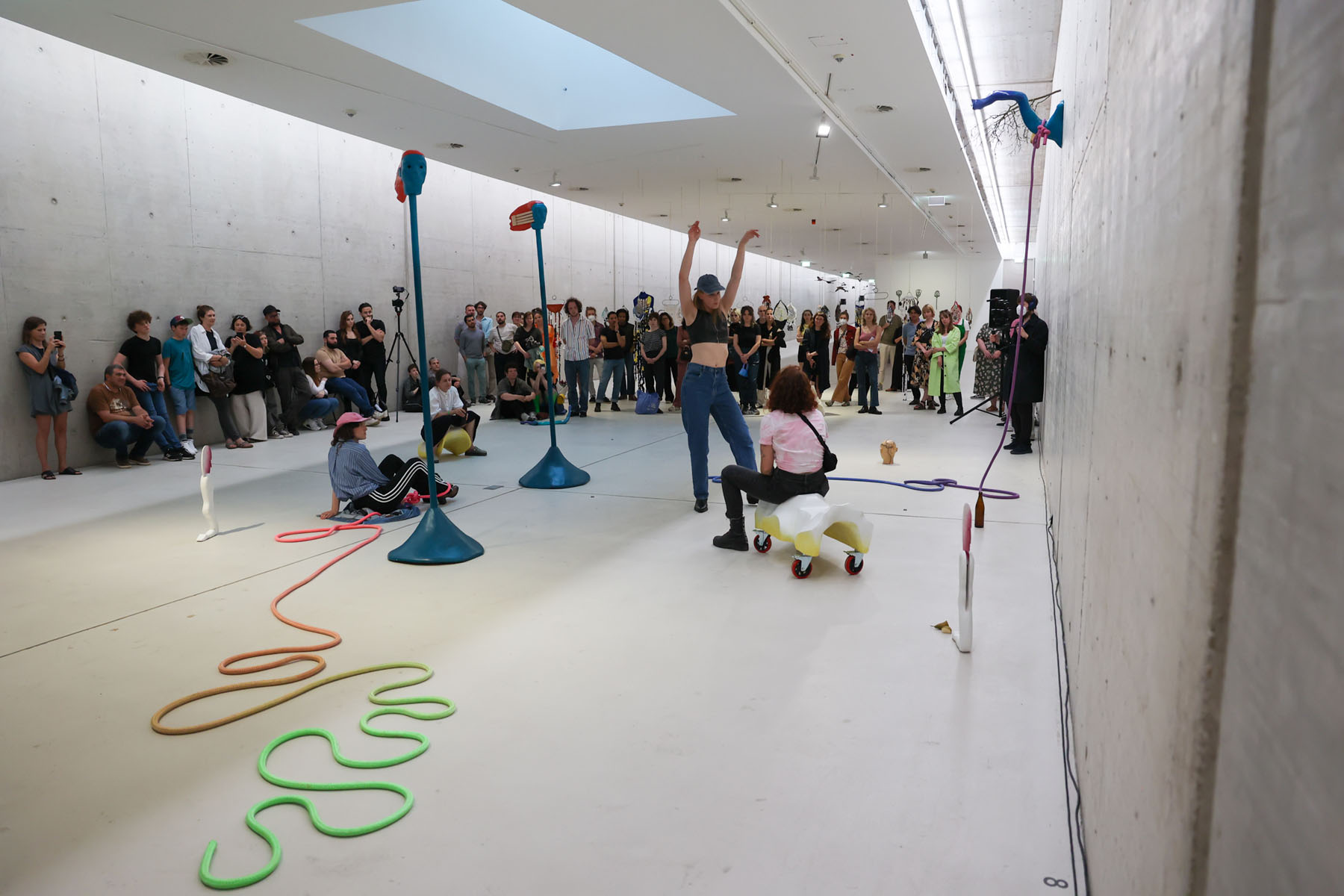
photo exbhition view: Ivo Faber
photos performance: Melanie Zanin